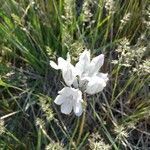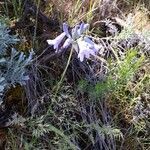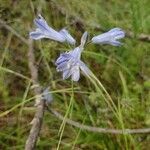An onion family plant. It is a clumping herb that keeps growing from year to year. The corms are round and straw coloured. It grows 30-60 cm high and spreads 20-30 cm wide. The leaves are fine, flattened and grass-like. The flower stems are wiry. The flowers are funnel shaped and blue, mauve or white. They are in heads. The flowers have widely flared lobes.



